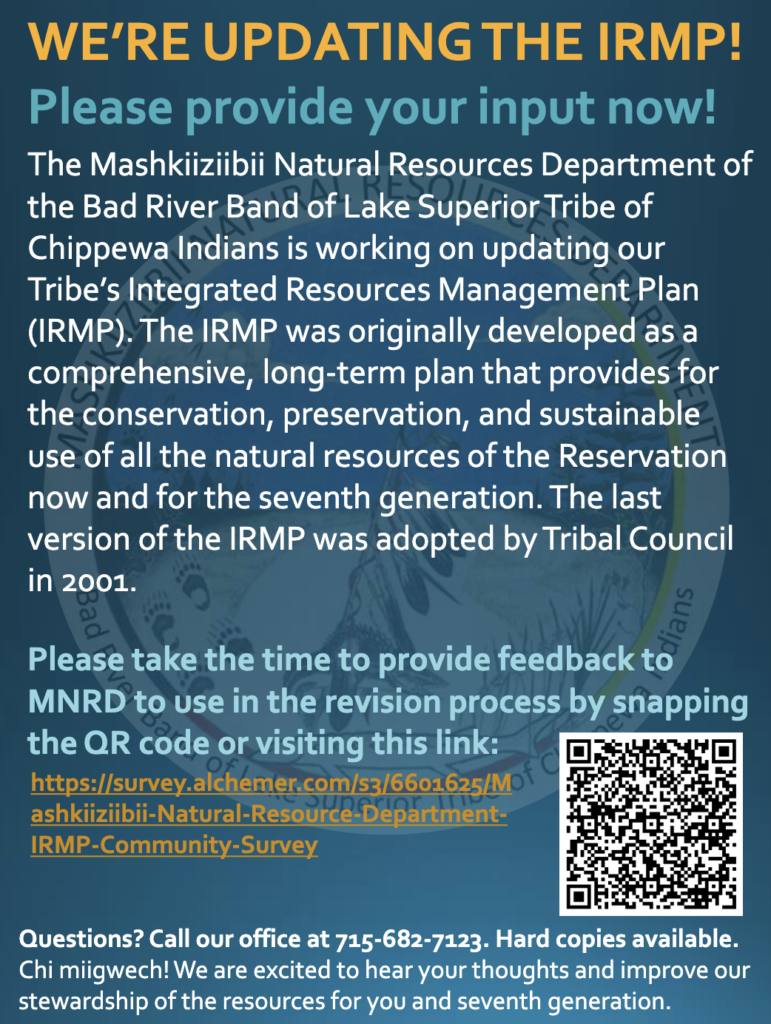The Tribe has received numerous recognition in efforts to protect the environment, such as:
| 2022 | Kakagon and Bad River Sloughs identified as an Aquatic Resource of National Importance Read the ARNI Fact Sheet here (PDF) | |
| 2017 | Bad River Band’s Natural Resource Department received the Geospatial Information System (GIS) Program of the Year Award | |
| 2015 | Wisconsin Wetlands Association Wetlands Award for the outstanding efforts to promote the protection, restoration, and enjoyment of wetlands in Wisconsin | |
| 2012 | Kakagon and Bad River Sloughs designated as a Wetland of International Importance under the Convention on Wetlands (also known as a Ramsar site). Read more about Ramsar Sites here (PDF) | |
| 2012 | Kakagon and Bad River Sloughs receiving the Blue Globe Award from the World Wetland Network in January, 2012. | |
| 2009 | Bad River Tribe received the authority of treatment in a manner similar to a state (TAS) for the Clean Water Act Sections 303 (c)/401 for a Water Quality Standards Program | |
| 2009 | Kakagon and Bad River Sloughs named a Wetland GEM® by the Wisconsin Wetland Association in recognition of the Bad River Tribe’s efforts for conservation & stewardship of this coastal wetland ecosystem. Read the GEM Fact Sheet here (PDF) | |
| 2005 | The Bad River Tribe was the first tribe in Wisconsin to be granted authority under the Clean Air Act to protect our Nations’ vital air resources as a sovereign partner with the US Environmental Protection Agency | |
| 1998 | Wisconsin Coastal Management Program Coastal Stewardship Award | |
| 1997 | National Oceanic and Atmospheric Administration Walter B Jones Memorial NOAA Excellence Award for Coastal and Ocean Resource Management | |
| 1996 | Wisconsin Nature Conservancy Conservation Partnership Award | |
| 1973 | Kakagon Sloughs designated as a National Natural Landmark (NNL) (link) |
2021 Mashkiiziibii Natural Resources Department Virtual Open House
Due to the covid19 pandemic our bi-annual Open House was fully virtual with presentations from our Mashkiiziibii Natural Resources Department Staff.
- Brownsfield Program Presentation & Geographic Information Specialist (GIS) Presentation
- Forestry Presentation
- Fisheries Program Presentation & Air Program Presentation
- Manoomin (Wild Rice) Presentation & Cattails Presentation
- Enbridge Informational Presentation
- Piping Plover Presentation & Land Office Presentation
- Ishkonige Nawadide Solar Project Presentation
- Tribal Historic Preservation Office (THPO) Presentation
- Water Regulations Presentation
- Carnivore Coexistence Wildlife Presentation
- Conservation Warden Presentation & POWTS Presentation
- Ogimaa Aki Wigamig (Land Office) Presentation & Sea Lamprey Management Presentation
- Youth Entries
For the Bad River Band of Lake Superior Tribe of Chippewa Indians in Northern Wisconsin, water is life. Protecting water means protecting the watersheds that provide water for their Reservation and people from top to bottom, including uplands, floodplains, and globally important coastal wetlands along Lake Superior. It also means carefully monitoring their land and water resources and developing programs and policies to protect these resources for future generations. As a result of these efforts, the Tribe is protecting water quality, alleviating flooding, protecting habitat for fish and wildlife, and providing natural resources for their people’s sustenance and cultural practices.
